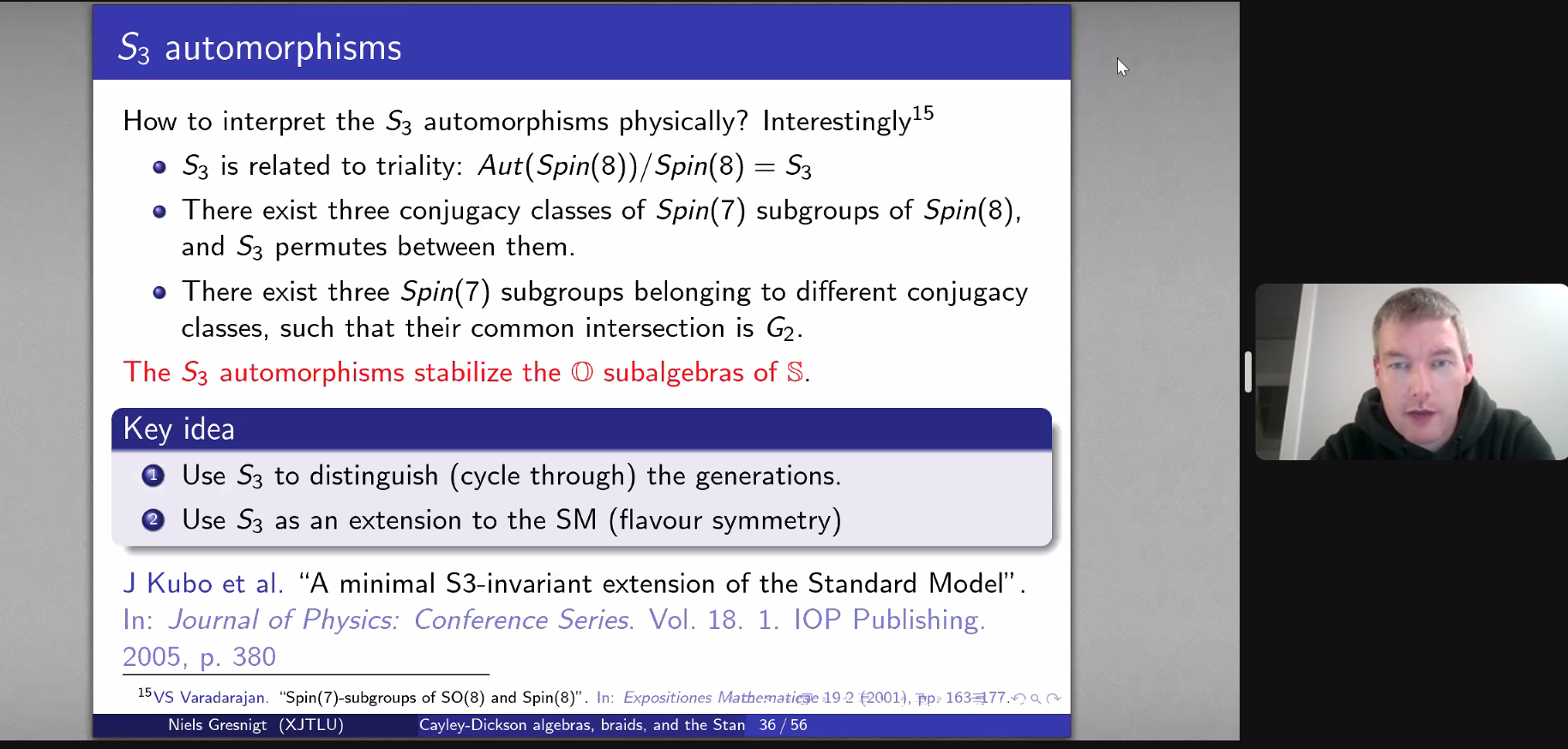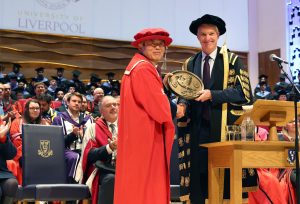26 Sep 2023
It’s not very often that you meet your heroes, let alone give a seminar in the same series as them.
That’s what happened to Dr Niels Gresnigt, Associate Professor at XJTLU’s Department of Physics. Dr Gresnigt was invited to give a lecture and be an advisor for the online lecture series Octonions, Standard Model, and Unification (OSMU23).
The seminars, occurring fortnightly between February and December 2023, feature ongoing research from eminent physicists and mathematicians working on space-time structures in quantum theory.
As if giving a talk was not nerve-wracking enough, Dr Gresnigt’s audience included some of the most extraordinary minds in the world of science, including Professor Sir Roger Penrose, who also gave the opening seminar of the series.
Over the course of his career, Professor Penrose has won several of the most prestigious prizes in physics, including the 2020 Nobel Prize in physics and the 1988 Wolf Prize, which he shared with Stephen Hawking.
Other well-known physicists will also deliver lectures in the series, including Professors Basil Hiley, Albert Schwarz, Robert Arnott Wilson, and Geoffrey Dixon.
Time to unite
The speakers at each seminar focus on the physics and mathematics that describe the different elementary particles that make up our universe and their possible interactions.
The standard model of particle physics explains how elementary particles interact through strong, weak, and electromagnetic forces. Although it does a wonderful job of predicting the outcomes of experiments, some theoretical questions remain unanswered.
“To answer these concerns, recent research has suggested adopting a particular type of number system called a division algebra. The largest of these number systems, known as the octonions, is one of only four found in nature,” says Dr Gresnigt.

Octonions – a number system that may hold the key to understanding the laws of nature
During Dr Gresnigt’s talk, he outlined some ideas of how they might mathematically describe the behaviour of particles within the algebraic framework of the division algebras.
He also discussed a curious association between these algebraic models and a topological description of particles in terms of simple braids: sets of parallel strings that are intertwined in a specific way.

Braids – sets of parallel strings that are intertwined in a specific way
This series has brought together over 20 physicists and mathematicians, and Dr Gresnigt says he has already built collaborations and connections with other speakers in this series.
He says: “A number of physicists and mathematicians around the world focus on using octonions and the other division algebras to understand why we observe the particles that we do and to explain their behaviour.
“Consequently, this seminar series provides a chance for us to exchange ideas, collaborate on research projects, and move forward.
“The idea that division algebras may underlie the rules of nature is what inspired the current lecture series.”

Dr Niels Gresnigt delivering his online lecture
OSMU23 was presented by the Archive Trust for Research in Mathematical Sciences and Philosophy (Oxford) and the Inter-University Centre for Astronomy and Astrophysics (Pune).
About the researcher
Dr Niels Gresnigt joined XJTLU in August 2014. His research interests include theoretical high energy physics and loop quantum gravity.
His recent study is “Braided matter interactions in quantum gravity via one-handle attachment”. Click here to read it.
By Qinru Liu
Edited by Catherine Diamond and Patricia Pieterse
26 Sep 2023







